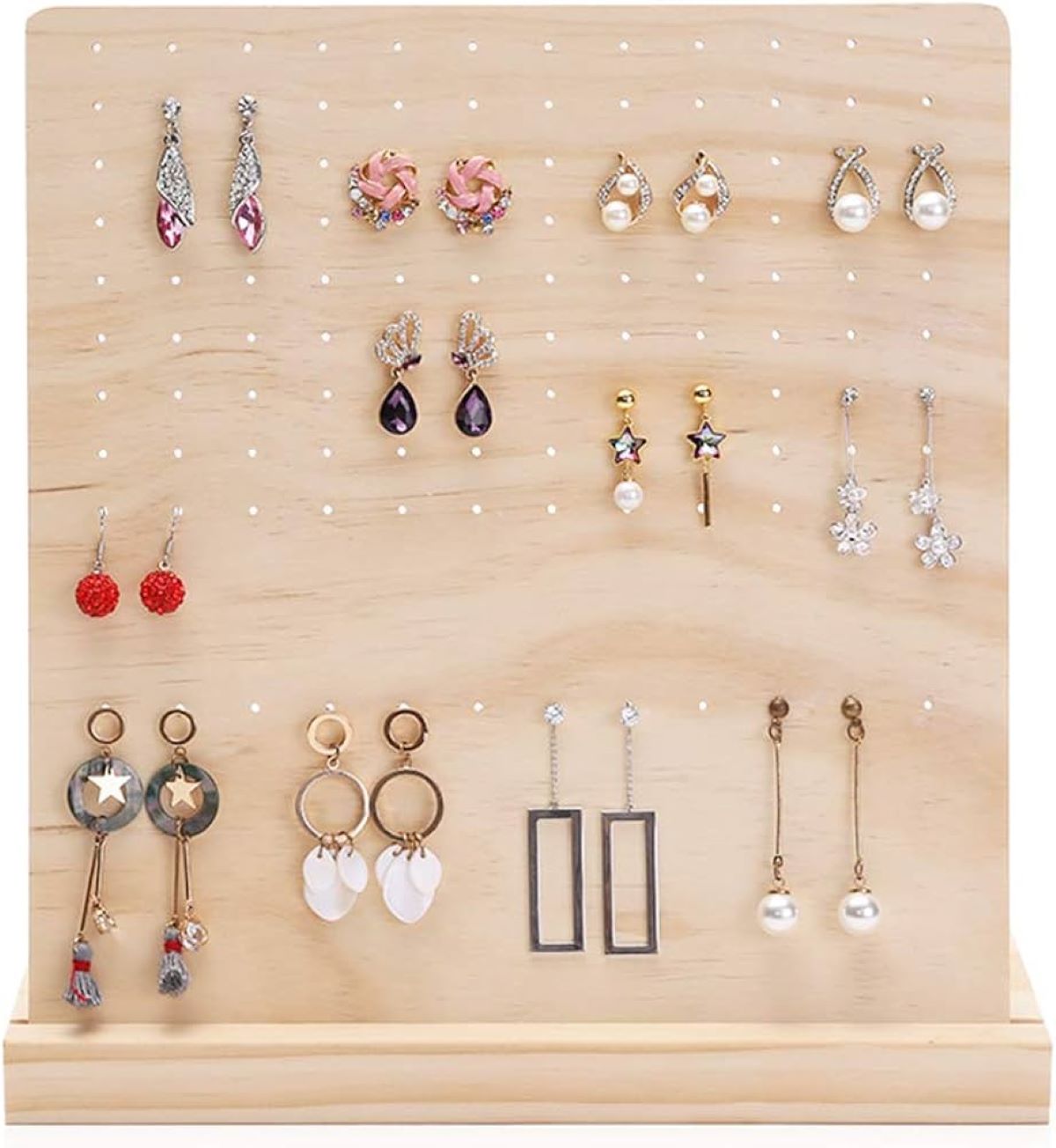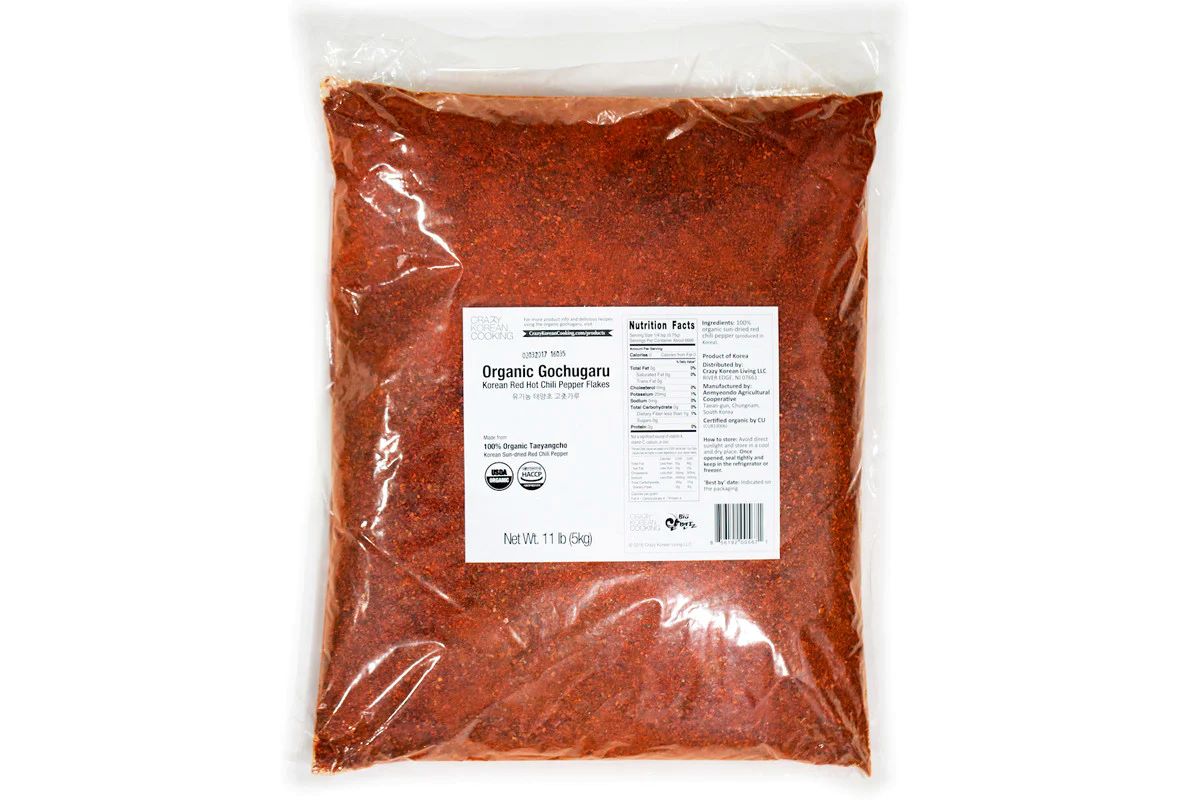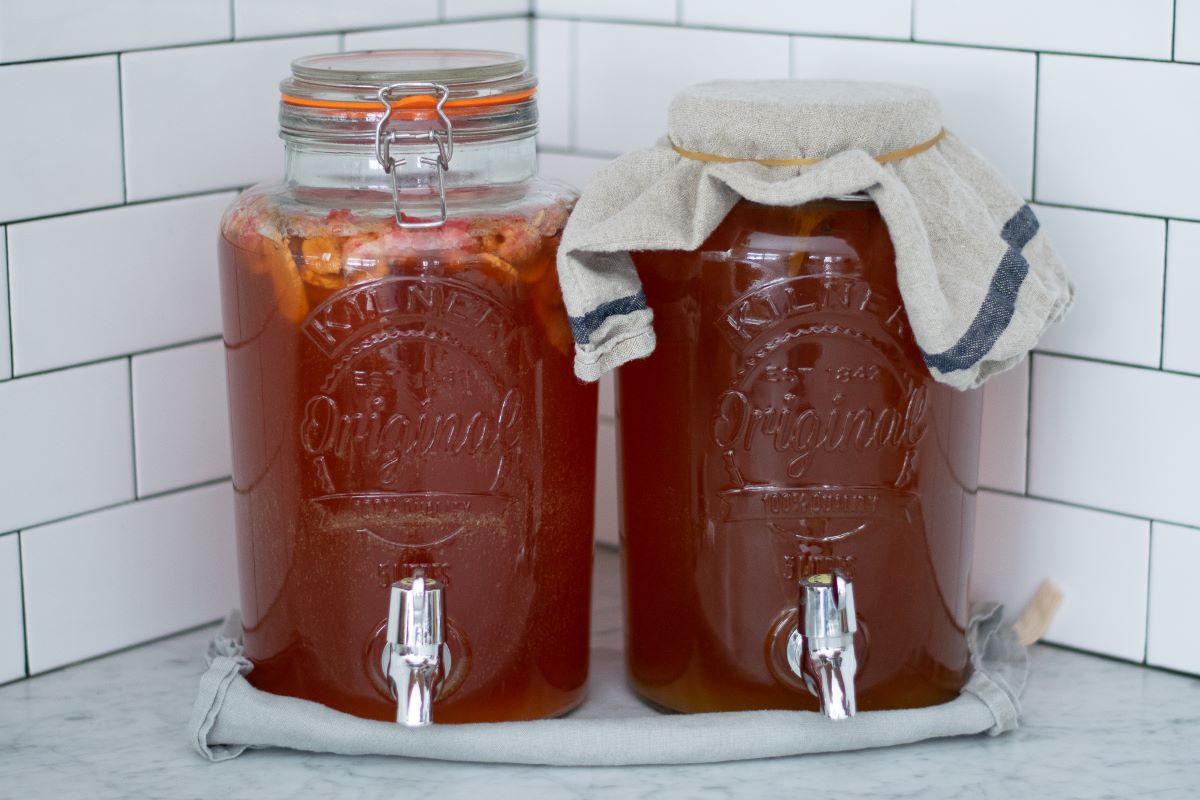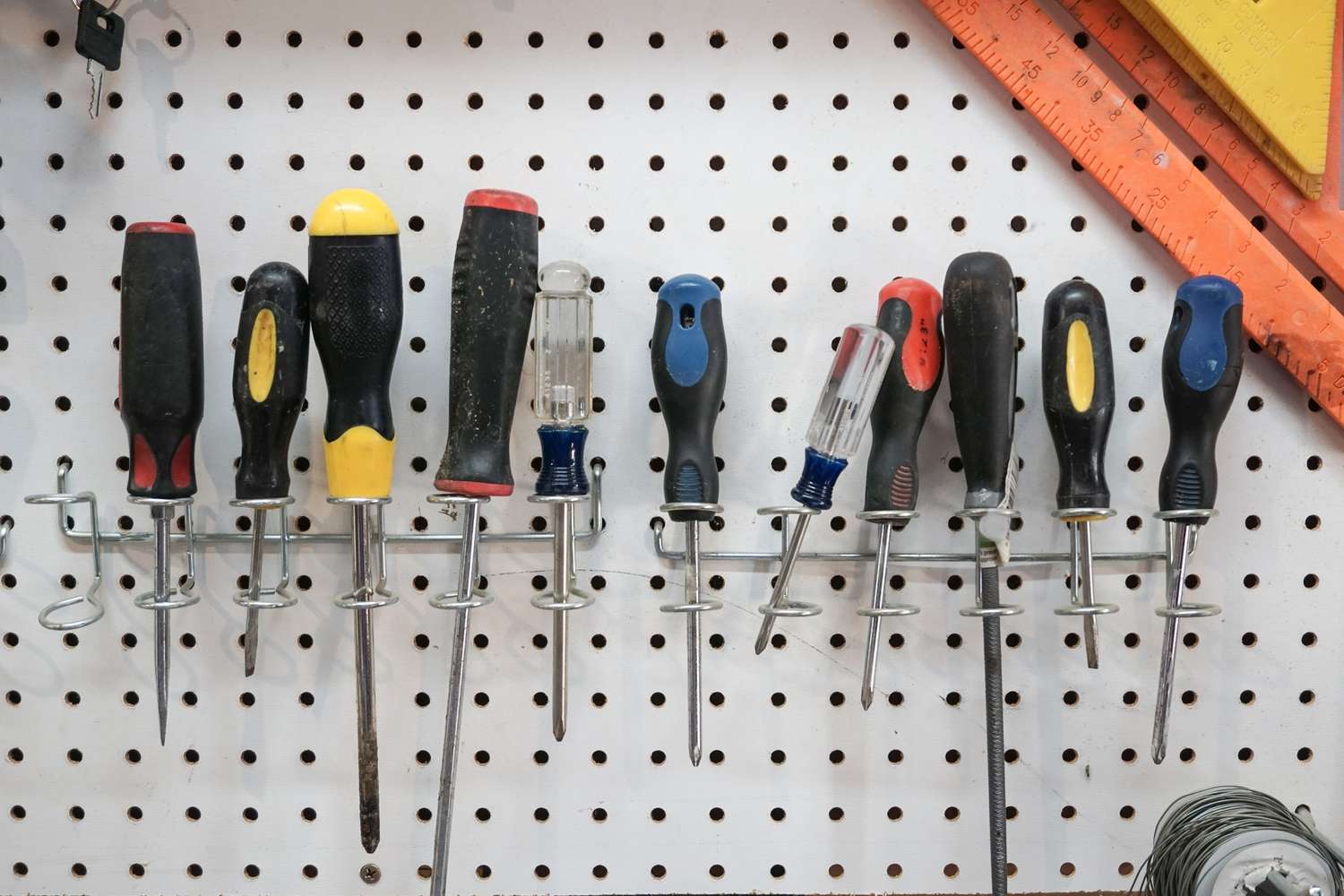

Articles
How To Store Yearbooks
Modified: August 27, 2024
Learn how to properly store your yearbooks with these helpful articles. Preserve your precious memories for years to come.
(Many of the links in this article redirect to a specific reviewed product. Your purchase of these products through affiliate links helps to generate commission for Storables.com, at no extra cost. Learn more)
Introduction
Welcome to the world of yearbooks, where memories and milestones are captured between the pages. Yearbooks serve as keepsakes of our school days, preserving cherished moments and connections with friends and teachers. But what happens when the final bell rings and it’s time to store these precious mementos?
Proper yearbook storage is crucial to ensure their longevity and the preservation of the memories they hold. Whether you are a student, a parent, or a school administrator, understanding how to store yearbooks is essential to maintain their condition and protect them from damage.
In this comprehensive guide, we will explore the importance of proper yearbook storage and provide you with valuable tips and strategies to make sure your yearbooks stand the test of time. From selecting the right storage location to implementing protective measures, we will cover everything you need to know to store yearbooks effectively.
So, let’s dive in and unlock the secrets to preserving your yearbooks for years to come. Whether you’re storing a single yearbook or an entire collection, this guide will help you keep them safe and secure.
Key Takeaways:
- Proper yearbook storage is crucial for preserving memories, protecting against physical damage, and enhancing resale value. Choose a suitable location, use archival-quality materials, and implement protective measures for long-term preservation.
- Climate control, handling with care, and digitization are essential for safeguarding yearbooks. Follow best practices, such as regular inspection and organization, to ensure the memories within these cherished mementos remain vibrant and intact.
Read more: How To Store Store-Bought Bread
Importance of Proper Yearbook Storage
Proper yearbook storage is essential for preserving these cherished keepsakes and the memories they capture. Without proper storage techniques, yearbooks can deteriorate over time, leading to irreversible damage. Here are a few reasons why investing time and effort into proper yearbook storage is so important:
Preserving Memories: Yearbooks are a nostalgic link to our past, containing photographs, messages, and signatures that document our school years. By storing yearbooks properly, we ensure that these precious memories remain intact for future generations to enjoy.
Protecting Against Physical Damage: Yearbooks are vulnerable to a wide range of physical damage, such as moisture, sunlight, dust, and pests. Proper storage techniques provide protection against these elements, reducing the risk of torn pages, fading ink, mold, and insect infestations.
Prolonging Lifespan: By implementing proper storage measures, we can significantly extend the lifespan of yearbooks. This means that these treasured items can be enjoyed for many years to come, without worrying about deterioration or loss of quality.
Preserving Historical Value: Yearbooks often hold historical significance, serving as a record of the school’s past and showcasing the social and cultural aspects of a particular era. Proper storage ensures that these historical artifacts are preserved accurately, allowing future generations to explore and learn from them.
Enhancing Resale Value: Some yearbooks, especially those from older editions or significant events, can have substantial resale value. By storing them properly and maintaining their condition, you can increase their market value and potentially sell them to collectors or interested individuals.
Overall, proper yearbook storage is crucial for maintaining the integrity and sentimental value of these cherished mementos. By following the right storage techniques and investing in suitable storage solutions, you can protect your yearbooks and ensure that the memories they hold remain vibrant and intact.
Choosing the Right Storage Location
When it comes to storing yearbooks, selecting the right location is paramount to their preservation. Here are some important factors to consider when choosing a storage location:
Avoid Areas Prone to Moisture: Moisture is one of the biggest threats to yearbooks, as it can lead to mold, mildew, and page warping. Avoid storing yearbooks in basements, attics, or areas with high humidity levels. Instead, choose a cool, dry, and well-ventilated space for optimal preservation.
Keep Away from Direct Sunlight: Exposure to direct sunlight can cause fading and discoloration of yearbooks’ covers and pages. Store them away from windows or any areas where they may be exposed to excessive light. If natural light cannot be avoided, consider covering the yearbooks with archival-quality UV-protective sleeves or placing them in light-resistant storage containers.
Consider Temperature Fluctuations: Extreme temperature variations can damage yearbooks. Avoid storing them in areas prone to rapid temperature changes, such as garages or sheds. Instead, choose a location with a stable temperature of around 65°F to 70°F (18°C to 21°C).
Security and Accessibility: Choose a storage location that provides security and easy accessibility. Consider using locked cabinets, bookshelves, or dedicated storage boxes to protect yearbooks from unauthorized access or potential damage. Ensure that the storage area is easily accessible so that you can retrieve yearbooks as needed without causing any harm.
Elevate from Floor Level: To protect yearbooks from potential water damage, store them on elevated shelves or in storage containers that keep them off the floor. This helps prevent any accidental spills, leaks, or flooding from affecting the yearbooks.
Avoid Areas with Pests: Pests like rodents and insects can cause significant damage to yearbooks. Avoid storing them in areas prone to infestations, such as basements or attics. Keep the storage area clean and regularly inspect for signs of pests. Consider using pest repellants or storing yearbooks in pest-resistant containers or sleeves to ensure their protection.
By considering these factors, you can choose a storage location that minimizes potential risks and provides optimal conditions for preserving your yearbooks. Remember, the right storage location lays the foundation for the long-term protection of these treasured memories.
Preparing Yearbooks for Storage
Before placing your yearbooks in their designated storage location, it’s important to take some preparatory steps to ensure their protection. Here are some key tips for preparing your yearbooks for storage:
Clean the Yearbooks: Start by gently cleaning the yearbooks to remove any dirt, dust, or debris that may have accumulated over time. Use a soft, lint-free cloth to wipe the covers and pages. Avoid using harsh cleaning agents or excessive moisture that may damage the yearbooks.
Repair Damaged Pages: Carefully assess each yearbook for torn or damaged pages. If you come across any, consider using archival-quality document repair tape to mend minor tears. For more extensive damage, it’s best to consult a professional book restorer to ensure proper preservation.
Remove Loose Inserts: Many yearbooks contain loose inserts like photographs, newspaper clippings, or other memorabilia. Remove these inserts from the yearbooks before storing them. Place the inserts in separate acid-free envelopes or sleeves and label them accordingly for easy identification and safekeeping.
Consider Deacidification: Yearbooks printed before the late 20th century might be acidic, which can accelerate their deterioration. Consider consulting a professional book conservator to deacidify the yearbooks and neutralize their pH levels. Deacidification helps preserve the longevity of the pages and prevents yellowing and brittleness.
Photograph the Yearbooks: Take photographs of each yearbook before storage. These photographs will serve as a visual record of the condition of the yearbooks and can be useful for insurance purposes or reference in case of damage or loss.
Label and Catalog: Create a clear labeling and cataloging system for your yearbooks. Label each yearbook with the corresponding school year, name, and any other relevant information. Keep a detailed inventory or catalog of your yearbook collection, including brief descriptions of each yearbook’s content. This will help you easily locate specific yearbooks when needed.
By following these preparation steps, you ensure that your yearbooks are clean, repaired, and organized before they are stored. Taking the time to properly prepare your yearbooks will contribute to their long-term preservation and make it easier for you to access and enjoy them in the future.
Organizing and Arranging Yearbooks
Proper organization and arrangement of yearbooks not only make it easier to store and retrieve them but also helps in their long-term preservation. Here are some tips for organizing and arranging your yearbook collection:
Sort by School Year: Organize your yearbooks chronologically, starting with the earliest year and ending with the most recent. This makes it simple to locate specific yearbooks based on the school year they represent.
Create a Dedicated Space: Designate a specific area or shelf to store your yearbooks. This helps keep them organized and prevents them from being mixed up with other items. If your collection is large or growing, consider investing in dedicated bookshelves or storage containers to keep them neatly arranged.
Consider Alphabetical Order: If you have a vast yearbook collection and want to take your organization to the next level, consider arranging them alphabetically by school name. This can be useful if you have yearbooks from different schools or if you want to locate a specific school’s yearbook quickly.
Separate Special Editions: If you have any special editions or commemorative yearbooks, consider separating them from the regular yearbooks. Place them in a separate section or display area to showcase their significance.
Use Protective Covers or Sleeves: Consider using archival-quality protective covers or sleeves for each yearbook. These covers provide an extra layer of protection against dust, moisture, and other environmental elements. Make sure the covers are made from acid-free materials to prevent any potential damage to the yearbooks over time.
Group by Theme or Subject: If you have yearbooks from different schools or different types of institutions, such as colleges or universities, you might want to group them by theme or subject. This can help you easily locate specific yearbooks based on your preferences or interests.
Label and Document: Label each bookshelf or storage container with the corresponding year or school name. Additionally, keep a catalog or inventory list of your yearbook collection. This list can include details like the school name, year, condition, and any significant notes or memories associated with each yearbook.
Periodically Review and Reorganize: Regularly review your yearbook collection and make adjustments as needed. As you acquire new yearbooks or expand your collection, you may need to reorganize and adjust the arrangement to accommodate the additions.
By organizing and arranging your yearbooks in a systematic and thoughtful manner, you not only keep them easily accessible but also contribute to their preservation and longevity. Whether you choose to arrange them chronologically or by school name, the key is to find a system that works for you and ensures that your yearbooks are well-organized and protected.
Read more: How To Store Basil From Grocery Store
Importance of Climate Control
Climate control plays a crucial role in preserving the condition and longevity of yearbooks. Fluctuations in temperature and humidity levels can cause significant damage to these cherished mementos over time. Here are some reasons why climate control is essential for yearbook storage:
Prevents Mold and Mildew: High humidity creates an ideal environment for mold and mildew growth, which can quickly spread and damage yearbooks. By maintaining a controlled climate with low humidity levels, you can minimize the risk of mold and mildew formation, preserving the integrity of the yearbooks.
Reduces Risk of Foxing: Foxing, the occurrence of reddish-brown spots or stains on paper, is a common problem in environments with high humidity. By controlling the moisture levels, you can significantly reduce the risk of foxing and maintain the aesthetic appeal of the yearbooks.
Prevents Ink Bleeding and Fading: Fluctuating humidity levels can cause ink to bleed or fade on the pages of yearbooks. Controlling the climate helps preserve the vibrancy of printed text and images, ensuring that the yearbooks’ contents remain intact and legible over time.
Avoids Page Warping: Extreme temperature changes can cause yearbook pages to expand and contract, leading to warping or buckling. By maintaining a stable climate, you prevent this physical distortion, keeping the yearbooks in their original form.
Prevents Pest Infestations: Certain pests, such as silverfish and booklice, thrive in warm and humid environments. Climate control helps deter these pests from infesting your yearbooks, protecting them from potential damage caused by insects.
Preserves Adhesive and Binding: Adhesives and bindings used in yearbooks can deteriorate in high humidity or extreme temperature conditions. Climate control helps preserve the integrity of the adhesive and binding materials, ensuring that the yearbooks remain intact and structurally sound.
Enhances Long-Term Durability: Yearbooks are meant to be treasured for decades, and climate control is vital to ensure their long-term durability. By creating a controlled environment, you optimize the conditions for preserving yearbooks, allowing future generations to enjoy them without concerning degradation.
Investing in climate control for your yearbook storage area, whether it’s through the use of air conditioning, dehumidifiers, or humidity control systems, is a crucial step in preserving the quality and condition of your collection. By maintaining a proper climate, you protect your yearbooks from the damaging effects of moisture, temperature fluctuations, and pests, ensuring their longevity for years to come.
Store yearbooks in a cool, dry place away from direct sunlight to prevent fading and damage. Consider using acid-free boxes or sleeves to protect the pages from yellowing and deterioration.
Protective Measures for Yearbooks
To safeguard your yearbooks from damage and preserve their condition, it is essential to implement protective measures. These measures can significantly extend the longevity of your yearbooks and keep them in pristine condition. Here are some key protective measures to consider:
Use Archival-Quality Storage Materials: Invest in archival-quality storage materials specifically designed for preserving precious documents. Acid-free boxes, sleeves, and folders are ideal choices as they do not release harmful chemicals that can deteriorate the paper or ink in your yearbooks.
Avoid Adhesive Materials: When storing yearbooks, avoid using adhesive materials such as tape or glue. These can lead to permanent damage and staining on the pages. Instead, rely on archival-quality document repair tape or archival glue for any necessary repairs or reinforcements.
Handle Yearbooks with Clean Hands: Always handle yearbooks with clean and dry hands to prevent transferring oils, dirt, or moisture to the pages. Oils and liquids can cause stains or damage to the paper and ink over time. If needed, wear clean cotton gloves to handle your yearbooks, particularly if they are exceptionally fragile or valuable.
Support Fragile Pages: If some pages in your yearbooks are delicate or prone to tearing, use acid-free tissue paper or archival-quality interleaving sheets to provide support and prevent further damage.
Avoid Lamination: While it may seem like a protective measure, lamination is not recommended for yearbooks. Lamination can trap moisture, heat, and chemicals, leading to irreversible damage and discoloration to the pages. It also makes it difficult to access or repair the yearbooks if needed.
Store Yearbooks Vertically: To prevent any unnecessary strain on the bindings, store yearbooks upright in bookshelves or storage containers. This helps maintain the structural integrity of the yearbooks and prevents pages from loosening or separating over time.
Keep Away from Hazardous Materials: Avoid storing yearbooks near sources of damaging materials, such as household cleaning products, solvents, or direct contact with plastic materials that can emit harmful gases. These substances can lead to degradation and discoloration of the yearbooks.
Regularly Inspect for Damage: Take the time to inspect your yearbooks regularly for any signs of damage or deterioration. Look for pests, stains, tears, or any other issues that may require immediate attention. By catching problems early, you can prevent further damage and address the issues promptly.
Consider Digitization: As an extra level of protection, consider digitizing your yearbooks. Scanning the pages and creating digital copies allows for easy access and sharing while reducing the risk of physical damage. Make sure to store the digital copies on multiple devices or cloud storage for redundancy.
By implementing these protective measures, you can ensure the long-term preservation of your yearbooks and protect them from potential damage. Remember, a little care and attention go a long way in maintaining the integrity and beauty of these cherished mementos.
Handling and Transporting Yearbooks
Proper handling and transportation of yearbooks are crucial to prevent damage and maintain their condition. Whether you’re moving them within your home or transporting them to a different location, following these guidelines will help keep them safe:
Handle with Care: When handling yearbooks, always support them from the bottom and spine to distribute the weight evenly. Avoid grabbing or pulling them from the top, as this can strain the binding and cause pages to tear or come loose.
Use Acid-Free Gloves or Clean Hands: Whenever possible, wear clean, lint-free cotton gloves while handling yearbooks to prevent oils, dirt, or moisture from transferring onto the pages. If gloves are not available, make sure your hands are clean and dry before touching the yearbooks.
Move Yearbooks Individually: Avoid stacking or piling up yearbooks when moving or transporting them. This can lead to pressure on the covers and bindings, potentially causing damage. Instead, handle each yearbook one at a time to ensure proper care and protection.
Use Sturdy Boxes or Containers: When transporting yearbooks, use sturdy boxes or containers that provide adequate protection. Ensure the containers are the right size to prevent the yearbooks from shifting or moving during transport. Line the containers with acid-free packing materials or bubble wrap to add an extra layer of cushioning.
Avoid Excessive Pressure or Weight: Do not place heavy objects on top of yearbooks during transport or storage. Excessive weight or pressure can cause the covers to bend or the pages to become damaged. Always store yearbooks in a secure and stable position to prevent any accidental mishaps.
Securely Close Containers: Make sure that the containers used for transportation have secure closures, such as latches or strong tape. This prevents the yearbooks from sliding out or becoming exposed to potential damage during transit.
Minimize Exposures to Extreme Temperatures: Avoid leaving yearbooks in a hot car or exposing them to extreme temperature conditions during transportation. Rapid temperature changes can cause warping, discoloration, or other forms of damage. If necessary, consider using a climate-controlled vehicle or protecting the yearbooks with insulating materials.
Keep Yearbooks Upright: During transport, keep yearbooks upright and secure in the containers. This reduces the risk of pages bending or becoming loose. If necessary, fill any empty spaces in the container with packing materials to ensure the yearbooks remain in an upright position.
Check for Damage after Transport: Once you’ve reached your destination, carefully inspect the yearbooks for any signs of damage that may have occurred during transportation. Look for bent covers, loose pages, or other issues that may need immediate attention.
By following these handling and transportation guidelines, you can minimize the risk of damage to your yearbooks and ensure their preservation. Remember, treating them with care and using suitable containers are essential steps in protecting these valuable memories.
Long-term Storage Options
When it comes to long-term storage of yearbooks, several options are available to ensure their preservation and protection. Consider these storage solutions to keep your yearbooks safe for generations to come:
Archival-Quality Boxes: Archival-quality boxes are specifically designed for long-term storage of sensitive documents. These acid-free, lignin-free boxes provide a protective environment that helps prevent deterioration and damage. Choose boxes that are the appropriate size for your yearbooks, ensuring a snug fit without excessive pressure on the covers.
Archival-Quality Binders: For easy access and organization, consider using archival-quality binders with acid-free, PVC-free sheet protectors. This storage option allows you to flip through the pages without directly handling the yearbooks, reducing the risk of damage.
Acid-Free Sleeves or Page Protectors: Use acid-free sleeves or page protectors to safeguard individual yearbook pages. Slide each page into a protective sleeve to shield them from dust, light, and other potential damaging factors. Make sure the sleeves fit properly and are of archival quality to ensure optimal preservation.
Flat File Cabinets: If you have a large collection of yearbooks, consider investing in flat file cabinets. These specialized cabinets feature wide, shallow drawers designed for storing oversized items like yearbooks. Flat file cabinets provide a horizontal storage solution that minimizes stress on the spine and covers of the yearbooks.
Dedicated Shelving Units: Regular bookshelves with solid and sturdy construction can also be used for long-term storage. Ensure the shelves are appropriately spaced to prevent yearbooks from leaning or collapsing. If possible, place acid-free, lignin-free folders or boxes on the shelves as an added protective measure.
Climate-Controlled Storage Units: For comprehensive preservation, consider renting a climate-controlled storage unit. These units provide stable temperature and humidity levels, ensuring optimum conditions for storing delicate items like yearbooks. Climate-controlled storage minimizes the risk of damage caused by fluctuations in the environment.
Off-Site Storage: If you don’t have the space or resources for long-term storage at home, consider utilizing off-site storage facilities. Look for facilities that offer climate-controlled options and have a good reputation for secure storage. Ensure the facility provides measures to protect against pests, dust, and other potential hazards.
When selecting a long-term storage option for your yearbooks, prioritize the protection of the items. Whether it’s investing in archival-quality materials, utilizing flat file cabinets or climate-controlled storage, choose the option that suits your needs and ensures the ongoing preservation of your cherished yearbooks.
Read more: How To Store Cinnabons
Best Practices for Storing Yearbooks
To ensure the optimal preservation of your yearbooks, it’s important to follow best practices for storage. These practices will help protect your yearbooks from damage and deterioration. Here are some key best practices to consider:
Choose a Suitable Storage Location: Select a cool, dry, and well-ventilated storage location for your yearbooks. Avoid areas prone to moisture, direct sunlight, or extreme temperature fluctuations. Storing yearbooks in a controlled environment helps prevent damage caused by humidity, light exposure, and other environmental factors.
Use Archival-Quality Storage Materials: Invest in high-quality, acid-free boxes, sleeves, or binders to store your yearbooks. These materials are specially designed for long-term preservation and prevent degradation of the pages and covers.
Avoid Harmful Substances and Materials: Keep yearbooks away from potentially damaging substances, such as solvents, household cleaning products, plastic materials, or adhesives. These substances can emit harmful gases or cause stains or degradation.
Maintain Proper Handling Techniques: Always handle yearbooks with clean, dry hands or wear archival-quality gloves to minimize the risk of transferring oils or moisture to the pages. Support the yearbooks from the bottom and spine to prevent strain on the binding.
Implement Protective Measures: Use acid-free tissue paper or archival-quality interleaving sheets to support delicate or fragile pages. Avoid using adhesive materials on the yearbooks, and refrain from lamination as it can damage the books over time.
Regularly Inspect and Clean: Periodically inspect your yearbooks for signs of damage, pests, or deterioration. Gently clean them using a soft, lint-free cloth to remove dust and dirt that could potentially cause harm.
Maintain an Organized System: Organize your yearbooks chronologically or by school name to easily locate specific yearbooks when needed. Label each yearbook or storage container with relevant information, and maintain a catalog or inventory list of your yearbook collection.
Implement Climate Control: Consider utilizing climate-controlled storage or maintaining a stable climate in your yearbook storage area. Controlling temperature and humidity levels helps prevent damage from mold, mildew, page warping, ink bleeding, and pests.
Digitize for Extra Protection: Consider digitizing your yearbooks to create digital copies that can be easily accessed and shared. Store the digital copies on multiple devices or cloud storage to ensure redundancy and protection against physical loss or damage.
Handle with Care during Transportation: Follow proper handling techniques when moving or transporting yearbooks. Support them from the bottom and spine, and avoid stacking or piling them up. Use sturdy boxes or containers to protect them during transit.
By following these best practices, you can ensure that your yearbooks are properly stored, protected, and preserved. These practices contribute to the longevity and quality of your yearbook collection, ensuring that the memories within them are cherished for years to come.
Conclusion
Preserving and protecting your yearbooks is not just about storing them away; it’s about safeguarding the memories, connections, and milestones they hold. By employing proper storage techniques and following best practices, you can ensure that your yearbooks remain in excellent condition for years to come.
In this comprehensive guide, we have explored the importance of proper yearbook storage and provided valuable tips on organizing, preparing, and storing yearbooks. We have highlighted the significance of climate control, protective measures, handling techniques, and long-term storage options. By implementing these strategies, you can safeguard your yearbooks and their sentimental value.
Remember to choose a suitable storage location that is cool, dry, and well-ventilated. Utilize archival-quality storage materials to prevent deterioration and damage. Handle your yearbooks with care, using clean hands or archival gloves. Implement protective measures such as acid-free sleeves, tissue paper, and interleaving sheets. Regularly inspect and clean your yearbooks to catch any potential issues early on.
Additionally, consider climate control options to maintain proper temperature and humidity levels, and explore long-term storage options such as archival boxes or dedicated shelving units. Digitizing your yearbooks can provide an extra layer of protection and accessibility.
By following these best practices, you can ensure that your yearbooks are well-preserved and safeguarded for future generations. Your efforts will help retain the memories, stories, and connections captured within these treasured mementos.
So, take the time to properly store, protect, and cherish your yearbooks. They are not just books; they are a gateway to your past, to moments shared with friends, to achievements and milestones. Treat them with the care and respect they deserve, and enjoy the nostalgic journey they offer every time you turn their pages.
Frequently Asked Questions about How To Store Yearbooks
Was this page helpful?
At Storables.com, we guarantee accurate and reliable information. Our content, validated by Expert Board Contributors, is crafted following stringent Editorial Policies. We're committed to providing you with well-researched, expert-backed insights for all your informational needs.














0 thoughts on “How To Store Yearbooks”